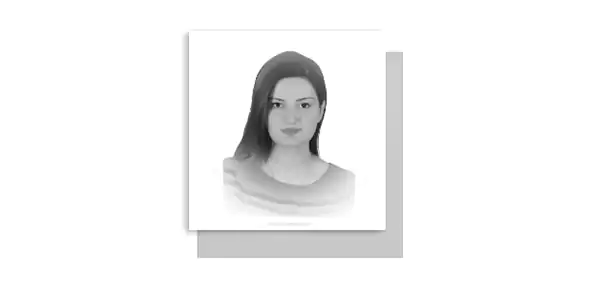IN recent years, Pakistan has been striving to diversify its tourism sector beyond the traditional attraction of scenic landscapes and cultural heritage. Two promising avenues that have emerged are medical and religious tourism, both of which hold significant potential to boost the country’s economy and global standing.
Pakistan is home to numerous religious sites that attract pilgrims from around the world. The Kartarpur Corridor, which allows Sikh pilgrims from India to visit the Gurdwara Darbar Sahib without a visa, is a prime example of Pakistan’s commitment to promoting religious tourism. The World Travel and Tourism Council estimates that Sikh tourism alone could contribute Rs.18billion annually to Pakistan’s economy, creating 82,000 jobs. The global Buddhist tourism market, involving 500 million Buddhists, could contribute Rs. 16 billion to Pakistan’s GDP and create employment opportunities for 30,772 individuals.
Some of the Buddhist sites in Pakistan include Takht-i-Bahi, an ancient Buddhist monastery in Khyber Pakhtunkhwa, renowned for its well-preserved monastic complex. Taxila, A UNESCO World Heritage site with numerous stupas and artifacts from the Gandhara civilization. Jamal Garhi, located in Mardan, Khyber Pakhtunkhwa dates back to the 1st century AD and offers a glimpse into the region’s Buddhist past. Shahbaz Garhi, also in Mardan features ancient rock edicts of Emperor Ashoka, highlighting the spread of Buddhism in the region.
Pakistan also has Hindu Temples like Katas Raj that is believed to be over 1,500 years old. Hinglaj Mata Temple, located in Balochistan is one of the most important pilgrimage sites for Hindus in Pakistan. Shivala Teja Singh Temple situated in Sialkot is dedicated to Lord Shiva and is an important site for local Hindu communities. Kalibari Mandir, located in Peshawar is one of the few remaining Hindu temples in the city.
For Sikhs, Gurdwara Janam Asthan, The birthplace of Guru Nanak is located in Nankana Sahib, Punjab. Gurdwara Panja Sahib, situated in Hasan Abdal is famous for the handprint of Guru Nanak on a rock. Gurdwara Rori Sahib,located in Punjab commemorates the site where Guru Nanak stayed during his travels. Gurdwara Bhai Joga Singh, situated in Peshawar is dedicated to Bhai Joga Singh, a devoted follower of Guru Gobind Singh. Our Sufi Shrines, the shrine of Sufi Data Ganj Bakhsh in Lahore is one of the most visited shrines in South Asia. Shrine of Lal Shahbaz Qalandar, located in Sehwan Sharif Sindhis known for its vibrant annual Urs festival.
These famous and lesser-known sites not only offer spiritual solace but also provide a glimpse into the rich religious and cultural heritage of Pakistan. Pilgrims visiting these sacred sites often spend on accommodation, food, and local crafts, thereby supporting small businesses and can potentially generate over $60 billion for Pakistan and create over 100,000 jobs. In Pakistan, medical tourism sector is on the cusp of a breakthrough. With state-of-the-art medical facilities in cities like Islamabad, Karachi, and Lahore, the country is well-equipped to offer high-quality healthcare services at a fraction of the cost in Western countries. Institutions like Aga Khan University Hospital, Kulsoom International and Shifa International Hospital are renowned for their high standards of care. Many Pakistani doctors are internationally trained and have extensive experience in their fields.
The affordability of medical procedures in Pakistan that can be up to 70% cheaper than in Western countries is a major draw for international patients, for example our IVF and infertility treatments. The lower cost does not compromise the quality of care, making it an attractive option for international patients. The influx of international patients for treatments such as cardiac surgery, orthopedic procedures, and cosmetic surgery can generate significant revenue for hospitals, clinics and overall economy.
In many Western countries, patients often face long waiting times for medical procedures. In Pakistan, the waiting times are generally shorter, allowing patients to receive timely medical interventions without having to wait for the formalities. For patients from Muslim-majority countries, Pakistan provides a culturally and religiously familiar environment. This can be particularly comforting for patients who prefer to be in a setting that respects their cultural and religious practices.
Patients and their families can also explore Pakistan’s rich cultural heritage and natural beauty during their stay. This adds an element of leisure and exploration to their medical journey. Thus, we can proudly say that Pakistan can successfully position itself as a destination not only for its natural beauty, but also for religious and medical tourism. The direct contribution of the travel and tourism sector to Pakistan’s GDP is currently 2.8%, compared to the regional average of 3.5%. By leveraging medical and religious tourism, Pakistan can significantly boost this percentage.
To achieve the aforementioned benefits, we must prioritize the development of our infrastructure. This includes enhancing healthcare facilities, improving roads, and upgrading accommodations. These improvements will not only attract more tourists but also elevate the quality of life for local communities. There are a few other challenges that need to be addressed to fully capitalize on medical and religious tourism. For medical tourism, improving the international perception of Pakistan’s healthcare standards and ensuring the availability of comprehensive medical insurance for foreign patients are crucial steps. For religious tourism, simplifying the visa process can also significantly boost tourist inflow.
Moreover, a robust marketing strategy that highlights Pakistan’s strengths in these sectors is essential. Collaborations with international travel agencies, participation in global tourism fairs, and targeted social media campaigns can help position Pakistan as a premier destination for both medical and religious tourism that offers both, healing and spiritual solace.
—The writer is contributing columnist, based in Islamabad.










